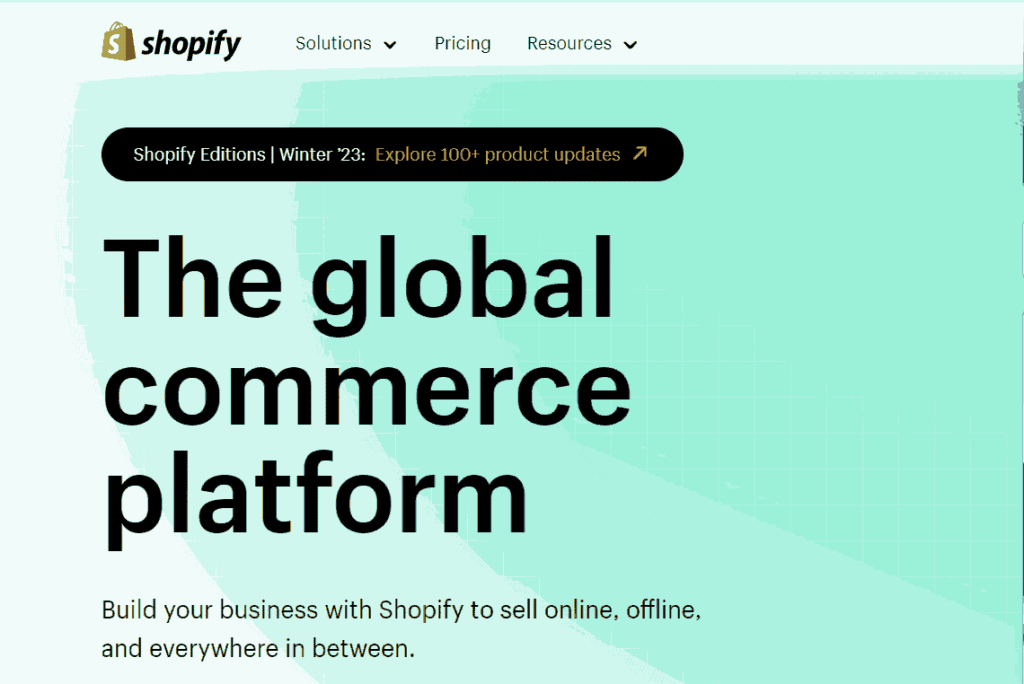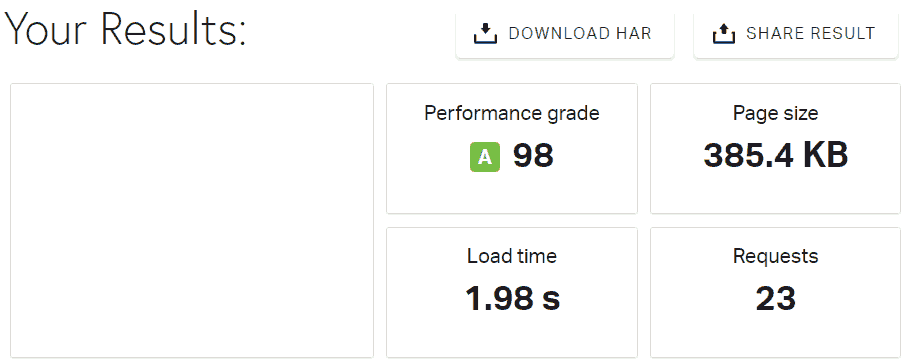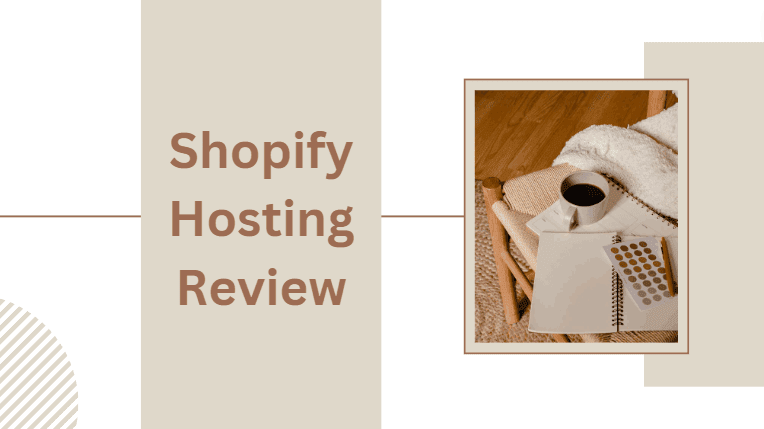Shopify is one of the most popular ecommerce platforms in the world, with over two million merchants selling in over 170 countries. An online store is an online store, so why do so many people prefer Shopify over competitors, even those with lower prices? Continue reading to learn about Shopify’s advantages, disadvantages, pricing, and how it compares to other leading ecommerce solutions.
Read our in-depth review to see if Shopify is the right host for you.
This in-depth review of Shopify will put their claims to the test. We will look into the following:
Reliability: Will your website be available 24/7 or there is chance of downtime in the middle of the night or on the weekend?
Performance: When hosted by Shopify, how quickly will your website load?
Pricing: Do they offer competitive prices? If there are any discounts available for Shopify?
Customer Support: Is Shopify reliable when you need immediate assistance with your website?
Features: Do they provide everything you need to create a website?
This is a comprehensive analysis of Shopify, which looks at the hosting service in a great deal of detail. If you don’t have the time to read our full review of Shopify’s hosting services, here is a scorecard that summarises our findings and concludes with our recommendation.
Shopify Review Summary
Performance grade A
Average load time 1.98 seconds
Free SSL No
Free domain name No
Moneyback guarantee No
Support Phone/Chat/Email/Knowledge base
About Shopify
Shopify is a website that hosts ecommerce platforms for users to create online stores. Shopify, which has been in business since 2004, provides users with a customizable platform, a simple checkout process, and 24/7 support. Overall, Shopify is an excellent choice for those looking to launch an online store.

Pros and Cons of Shopify
Every web host has advantages and disadvantages. In some cases, the benefits may outweigh the drawbacks, but in others, certain drawbacks may be a deal breaker.
Consider the benefits and drawbacks of using Shopify before making a final decision.
Let us begin with the benefits.
- Discounts: Shopify users can offer discounts to their customers to strengthen customer relationships and improve ecommerce marketing. Users can promote product sales, set up automatic discounts, and create discount codes. Users can set up an automatic discount trigger without needing a code when a specific product is added to a customer’s shopping cart. Users can set up specific sales on products, displaying the original price to customers. This gives them confidence that they are getting a good deal and aids in customer conversion. Users can create a manual discount as a percentage of a product’s price or as a fixed amount. A discount code can be customised to take effect based on variables such as a customer’s minimum order amount, the number of times the code can be used, the product collections to which the discount applies, and the date range for which it is valid.
- Expert marketplace: Shopify users can hire third-party agencies and freelancers to assist them in running their businesses. Any user who requires assistance with store setup, troubleshooting, branding, content writing, sales, or marketing can use the Expert Marketplace. This relieves stress for new business owners by outsourcing activities that they would rather not do.
- Multiple payment options: Every website builder plan allows you to start selling online right away using Shopify Payments—no third-party app required. Customers on Shopify can send money using credit cards, Amazon Pay, Apple Pay, PayPal, and cryptocurrencies. Shop Pay allows customers to input their shipping and payment information to reduce the number of steps required to make another purchase for a more efficient check-out process. Users of Shopify can choose from a plethora of third-party payment providers. When using an external payment provider, customers will be redirected to another website. However, if the user is using a direct payment provider, they will be able to pay directly on the user’s website. Shopify Payments can be used instead to avoid fees.
- Cart recovery: Customers who procrastinate or become distracted while shopping on a website benefit greatly from abandoned cart recovery. If a customer abandons his or her shopping cart, this feature allows you to retarget them via email. This can be automated and scheduled to be sent at specific times.
- Different product types: Depending on whether a user is selling a physical or digital product, Shopify has different features and settings. einsteineruploaded with. When selling digitally, users can distribute products via a downloadable link or by sending an email.
- Plug and play ecommerce: As a small business, you can start selling on Shopify very quickly. Hosting, website builder, payment gateway, order tracking, and marketing tools are all included. There is no lengthy installation process or waiting period to begin using the payment processor. Other platforms may require you to obtain web hosting, set up SSL certificates, install ecommerce plugins, and so on. Shopify takes care of everything so you don’t have to.
- Extra customer support: When running an online store, responsive customer service is critical. If a store is broken, it may not be able to sell goods until it is repaired. If a user requires assistance, Shopify provides four contact options. Shopify agents are available 24 hours a day, seven days a week via phone, chat, email, or Twitter. This ensures that user issues are dealt with quickly and effectively.
- Reporting and analytics: Shopify reports provide users with access to vital sales, marketing, and customer data. Its analytical tools assist users in determining critical customer insights and tracking recent business activity. With data on total business growth and daily website traffic, Shopify users can gain a comprehensive understanding of how their business is performing.
Cons of Shopify
- Difficulty in transition: If a Shopify user decides to migrate their online store to a new platform, they will face a difficult transition. When an account is closed, Shopify permanently deletes all online store data. Instead of assisting users in transitioning to a new platform, it locks them in by making switching difficult. This is also common with ecommerce platforms, but it is something to keep in mind.
- Total monthly price: Depending on your requirements, Shopify can be costly. Yes, the monthly subscription is very reasonable, but the price can rise due to apps, plugins, and third-party payment processor fees. This is the case with all ecommerce platforms, but we want to highlight the additional costs that users may face.
- Dependency on app: We love the Shopify app store’s variety and diversity, but there are some drawbacks to having so many of the best features available only as apps. You must keep apps up to date, possibly renew subscriptions, and ensure that the apps do not cause problems. If you use too many apps, your site will slow down.
Shopify Perfomance
When choosing a web host, cost is frequently the most important factor to consider, but performance should never be overlooked.
As a result, we decided to conduct our own tests in order to conduct a thorough analysis of Shopify’s performance.
Shopify Speed Test Results:
One of the most important performance metrics to consider when looking for important performance metrics is speed. A faster website not only improves the user experience, but it also improves your website’s search engine optimization (SEO).
For example, a one-second delay can result in a 15% drop in customer satisfaction, a 6% drop in conversions, and a 10% drop in page views. All of these changes can happen in a split second.
To assess the performance of our tests, we used Pingdom’s website speed testing tool. We obtained the following results as a result of the circumstances:

As you can see, it loaded in less than 2 seconds (1.98 seconds, to be exact).
Shopify Plans and Features
Shopify has a plan that will meet your needs and budget if you sell online:
- Shopify Starter – starting at $5 per month
- Basic– starting at $29 per month
- Shopify – starting at $79 per month
- Advanced – starting at $299 per month
- Shopify Plus – starting at $2,000 per month
When you sign up for a free three-day Shopify trial, you can use any of the Advanced plan’s features. That gives you three days to test almost any ecommerce feature, though you’ll need to sign up to begin selling.
Enterprise users should contact Shopify to discuss migrating to Shopify Plus, which can take as little as 3-4 months.
We’ll go over each Shopify plan in detail, beginning with the simplest and most affordable.
Shopify Starter
Shopify Starter is the missing link for people who want to sell online without managing a full online store. Seriously. You can create links that go directly to a Shopify checkout page for $5 per month.
Begin selling right away—via your social media profile, images you post, or even text message. You can make a sale anywhere you can put a link.
Shopify Starter is designed to be lightweight. It’s a low-cost, low-maintenance way for people to get started in ecommerce.
There are no restrictions on the number of product pages you can create. And, as far as your customers are concerned, nothing is lacking in their online shopping experience. Checkout is simple, quick, and secure.
We highly recommend it for people who want to share their products with an audience. There is no simpler or more cost-effective way to get started in ecommerce.
Basic
If you’re new to ecommerce but want to open an online store, the Basic Shopify plan is a good place to start. It grants two staff members with Shopify admin privileges to each account. einsteinerupload of.
Users can sell on social media and online marketplaces using Shopify’s sales channels. Users can assign inventory to up to 1000 inventory locations, such as retail stores or pop-ups, using the Locations feature. It includes up to 77% off shipping from USPS, UPS, or DHL Express.
Discount codes, manual order creation, free SSL certificates, gift cards, and abandoned cart recovery are among the other features. It also includes fraud detection and the ability to print shipping labels. It is important to note that when using a third-party payment provider, there is a 2% fee.
Users can sell in 133 different currencies for global business. Users can round prices up or down to ensure pricing consistency. Users of Basic Shopify can sell in up to five different languages.
Basic is a great place to start for ecommerce newcomers. It includes all of the necessary features, such as an ecommerce website, unlimited products, and sales channels.
Shopify
The next Shopify plan is simply called “Shopify.” It is intended for expanding businesses with only one retail location. It includes everything in Basic Shopify as well as professional reports and USPS Priority Mail cubic pricing.
It supports five administrators instead of two, and users can assign inventory to up to 1000 locations. It offers up to 88% off shipping with USPS, UPS, and DHL Express. Fees for third-party payment providers have been reduced to 1%.
Shopify allows users to create country-specific domains for international business, allowing international SEO to be optimised. It also allows users to customise the overall percentage change to raise or lower product prices in different countries.
Shopify is more than twice as expensive as Basic. Aside from a few new features and lower third-party payment fees, it isn’t noticeably different. We believe Shopify could do a better job of differentiating its second plan from Basic Shopify.
Advanced
Advanced Shopify is designed for expanding businesses with more than two retail locations. Everything from Shopify is included, plus advanced report creation, third-party calculated shipping rates, and customizable international pricing per product.
Its third-party payment processing fees are reduced to 0.5%, and the number of available Shopify admins is increased to 15 users. It allows you to assign inventory to up to 1000 different locations.
Advanced is significantly more expensive than Shopify and Basic. It does allow for far more available administrators, and the ability to customise the pricing of each international product is a nice bonus. It’s critical to assess your company’s needs before deciding whether it’s worth paying the higher price for the advanced plan.
Shopify Plus
If you have a large business needing enterprise-level solutions, Shopify Plus could be right for you. More than 10,000 leading brands, including Heinz, Staples, and Allbirds use Shopify Plus. While some ecommerce platforms can take up to a year to transition to, switching to Shopify Plus takes less than four months.
Shopify Plus’s Shop Pay provides up to 60% faster check-out times and up to 18% higher conversion rates. It uses modern technology like video, 3D media, and built-in AR when customers land on the product pages. Shopify Plus includes powerful automation and integration tools to create a smoother ecommerce experience.
Shopify Plus is a great platform that can be managed by a much smaller team compared to competitor platforms of this size. Users report high satisfaction and ease of use, and the platform sets itself apart from Shopify’s other plans.
Shopify POS
The Shopify Point-of-Sale (POS) system is not one of the company’s main plans, but it is worth mentioning. It is ideal for ecommerce companies with a physical storefront. Store owners receive a card reader, mobile barcode scanner, cash drawers, and a receipt printer with Shopify POS. It comes with a mobile app and allows users to link their physical location to their online store.
Shopify POS Lite is included with all Shopify plans for free. It comes with a one-year hardware warranty and accepts popular payment methods such as American Express, Visa, and Mastercard. Shopify POS Pro can be added to an existing plan for $89 per month per location. It comes with a two-year hardware warranty and omnichannel selling capabilities.
Shopify Customer Support and Service
When running an online store, responsive customer service is critical. If a store is broken, it may not be able to sell goods until it is repaired. If a user requires assistance, Shopify provides four contact options. Shopify agents are available 24 hours a day, seven days a week via phone, chat, email, or Twitter. This ensures that user issues are dealt with quickly and effectively.
Shopify offers a knowledge base, FAQ page, and help forum in addition to excellent customer service. Users can interact in the help forum and come up with creative solutions to common problems. The help centre on Shopify educates users through video tutorials, descriptions, and ecommerce definitions.
Bottom Line
You must know what you’re looking for when selecting the best ecommerce platform for your online store. The Sales Channels, Experts Marketplace, and Discount features of Shopify are fantastic additions to the platform. einsteinerupload of. If you require additional assistance, Shopify has the agents and resources to resolve your ecommerce issues.
